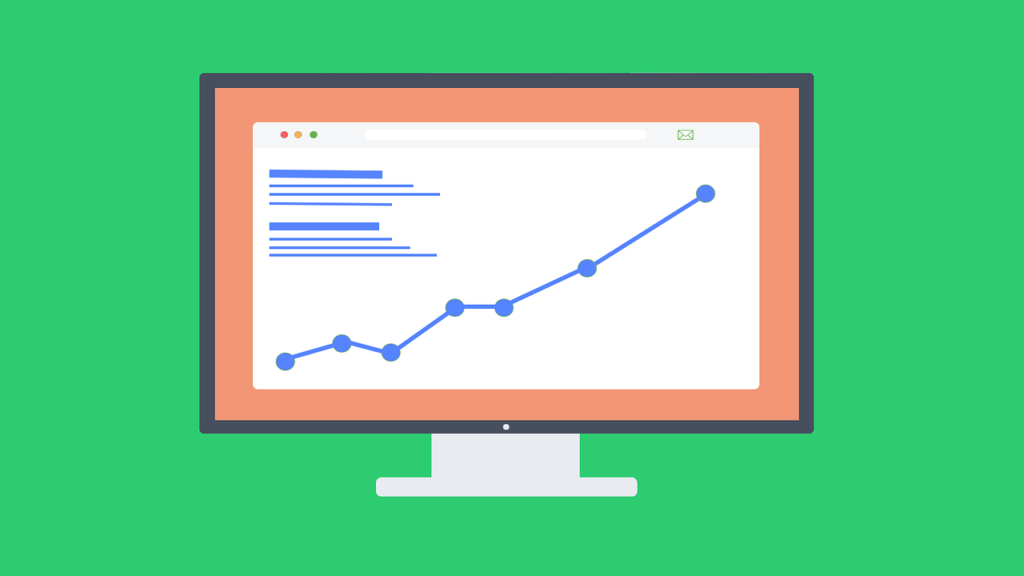When we think of SEO, we often picture search rankings, keyword placement, and traffic volume. But what about conversion? Attracting visitors to your website is only the first step—true success in SEO lies in turning those visitors into leads. The content you create plays a crucial role here. It’s not enough to simply rank high; you need to design your content in a way that encourages people to act, to take that next step from interested reader to qualified lead.
In this guide, we’ll explore strategies to create SEO content that goes beyond driving traffic. You’ll learn how to craft articles, guides, and landing pages that speak to your audience’s needs, build trust, and increase your conversion rates.
Understanding What Makes SEO Content Convert
From Traffic to Leads: It’s About Intent
Creating content that converts starts with understanding why your visitors are coming to your site. Not all organic traffic has the same intent. Some users are simply browsing, while others are actively looking for solutions or products. By aligning your content with the intent behind the keywords you target, you’re more likely to attract visitors who are ready to engage or buy.
For example, let’s say you’re targeting the keyword “best CRM for small business.” This phrase indicates a high level of interest, suggesting users are comparing options or close to making a decision. To convert them, your content should be in-depth, highlighting product benefits, pricing, and customer reviews. When content matches user intent, you’re not just attracting visitors—you’re attracting potential leads.
Content That Builds Trust
For content to convert, it must establish trust. Visitors need to feel confident that they’re making the right choice by engaging with your brand. This can be achieved through value-packed content, a clear and user-friendly layout, and by showcasing your expertise. Trust-building elements like testimonials, case studies, and expert quotes reinforce credibility and encourage visitors to take the next step.
Step 1: Identifying High-Intent Keywords for Lead Conversion

Target Long-Tail Keywords with a Specific Purpose
Long-tail keywords are essential when it comes to driving quality leads. These keywords are longer, more specific phrases that indicate a user is closer to conversion. Instead of broad phrases like “email marketing,” target phrases that show intent, like “affordable email marketing tools for small business.” This specificity helps you capture an audience that’s ready to convert.
For instance, a website selling project management software might focus on “best project management software for startups.” Users searching for this phrase likely have a clear goal and are actively looking for options, making them more likely to engage with CTAs or fill out a form.
Understand Buyer Stages and Create Keyword Clusters
Create a list of keywords that align with different stages of the buyer’s journey—awareness, consideration, and decision. Awareness keywords focus on broad questions (e.g., “what is SEO”), while consideration keywords show users are evaluating options (e.g., “SEO vs. PPC”), and decision keywords reflect readiness to act (e.g., “best SEO agency for startups”). Clustering keywords based on intent helps you craft content that speaks directly to where users are in their journey.
For example, if you run a digital marketing agency, a blog post like “The Benefits of SEO for Small Businesses” (awareness) can link to “How to Choose an SEO Agency” (consideration) and ultimately lead to “Request a Free SEO Consultation” (decision). This approach guides users seamlessly from one stage to the next, building familiarity and trust as they move closer to converting.
Step 2: Crafting Compelling, Value-Driven Content
Address Pain Points with Real Solutions
To convert readers, your content needs to do more than describe features or list benefits. It must address the pain points your audience is facing and offer genuine solutions. Think about what your target audience is struggling with, and provide actionable advice on how your product or service can solve these challenges.
For example, if you sell invoicing software, don’t just list features. Talk about the common frustrations small business owners have with invoicing, like late payments or tax season headaches. Show how your software addresses these issues by simplifying billing and offering payment reminders. This approach resonates with readers’ specific needs, making them more likely to view your product as a solution.
Create Engaging, Digestible Content with Clear Structure
The way your content is organized impacts how visitors engage with it. Use subheadings, short paragraphs, and bullet points where necessary to break down information. People are more likely to stay on the page—and convert—if the content is easy to read and well-structured.
For example, if you’re writing a guide on “how to choose CRM software,” start with an introduction that outlines the key points, use H2 headers for different sections (like “Features to Look For,” “Top CRMs for Small Businesses,” and “How to Compare Options”), and end with a clear CTA inviting readers to try your CRM solution. This layout helps readers find the information they need quickly, encouraging them to take the next step.
Use Data and Real-Life Examples
Backing up your claims with data and real-life examples adds credibility to your content. Statistics, case studies, and examples from your own client base make your content more persuasive and believable. This proof can be the tipping point for a lead who’s on the fence.
For instance, if you claim that your email marketing software can increase open rates, include a case study showing how one of your clients achieved a 30% increase. Adding this data to your content not only substantiates your claims but also demonstrates that your product or service delivers real results.
Step 3: Crafting Calls-to-Action (CTAs) That Convert
Align CTAs with Content Intent
Each piece of content has a unique purpose, and your CTA should match that purpose. If someone is reading an informational article, a CTA offering a free guide or newsletter sign-up may feel natural. But if they’re on a product comparison page, a “Get a Free Quote” or “Try a Demo” CTA aligns better with their intent.
For example, if you’re targeting the keyword “how to improve website SEO,” a CTA like “Download Our Free SEO Checklist” matches the user’s interest and provides added value. By aligning the CTA with the content’s intent, you encourage engagement without pushing too hard, making users more likely to take the next step.
Create CTAs that Offer Clear Value
A vague CTA like “Click Here” or “Learn More” won’t compel users to act. Instead, use language that clearly describes what they’ll get. “Get Your Free Report” or “Start Your Free Trial” speaks directly to the benefit users receive by clicking. When users see value in the CTA, they’re far more likely to convert.
For instance, on a page about content marketing strategies, a CTA that says “Download Our Free Content Marketing Blueprint” provides a specific benefit that encourages users to act. This clear promise of value is often enough to tip the balance in favor of a conversion.
Test CTA Placement and Design
Placement and design play an important role in CTA effectiveness. Experiment with placing CTAs at different points in your content—above the fold, mid-article, or at the end—to see what works best. A/B test button colors, text, and styles to identify the most effective combination for your audience.
For example, if your blog post is optimized for “how to create a social media plan,” you might start with a CTA at the top offering a “Downloadable Social Media Calendar Template.” Test placing the same CTA at the end of the article to see if users prefer engaging after they’ve read the content. Adjust based on the data to maximize conversions.
Step 4: Building Trust and Credibility Through Content

Include Testimonials and Case Studies
Visitors need to trust your brand before they’re willing to convert, and testimonials or case studies provide that trust. Showcase real customer experiences that demonstrate your product’s value. Including quotes from satisfied customers or a brief case study can be the proof users need to feel confident in taking action.
For instance, if you’re selling a B2B software solution, include a case study that outlines how a client achieved measurable results after using your product. This not only builds trust but also shows potential leads the tangible benefits they can expect.
Use Social Proof Strategically
If your brand has received awards, been featured in reputable publications, or boasts a large user base, share this information within your content. Social proof, like testimonials, works to establish trust and reassures visitors that your brand is credible and widely used.
For example, a line that says “Trusted by over 10,000 companies worldwide” can instill confidence in visitors and encourage them to explore further. Even a small amount of social proof can make a big difference in pushing leads closer to conversion.
Step 5: Optimizing Content for Mobile Users
Ensure Mobile-Friendly Layout and Load Speed
With more users accessing content on mobile devices, it’s crucial to ensure your content is optimized for mobile. A cluttered or slow-loading page can lead to high bounce rates, reducing the chance of conversions. Use responsive design, compress images, and prioritize quick load times to provide a seamless mobile experience.
For instance, a mobile-friendly layout for a “best project management software” article might feature a swipeable comparison chart instead of a large table, making it easier for users to view options and engage with the content on their phones.
Create Clear, Tap-Friendly CTAs
On mobile, users are less likely to engage with complex CTAs or tiny buttons. Ensure your CTAs are easy to tap, with sufficient spacing and a design that stands out. Test different CTA placements on mobile to find what works best for users on smaller screens.
For example, if you have a CTA for a free consultation, use a large, bold button that’s easy to tap without zooming. This small design tweak improves the user experience and can lead to higher engagement from mobile visitors.

Related: Check out our free tools:

Step 6: Tracking, Measuring, and Improving Content Performance
Use Analytics to Monitor Engagement and Conversion Rates
Track how users are engaging with your content and where they’re dropping off. Key metrics like bounce rate, time on page, and conversion rate can give you insights into what’s working and where improvements are needed. If a page has high traffic but low conversions, it might need a stronger CTA or more compelling content.
For example, if your article on “how to improve employee engagement” sees high traffic but low lead generation, consider adding a CTA that offers a free downloadable checklist or toolkit. By aligning CTAs with user intent, you increase the likelihood of conversion.
Continuously Optimize Based on Performance Data
SEO and content optimization are ongoing processes. Regularly review your content to identify which pieces are converting well and which ones need refinement. Test different versions, update outdated information, and continually adjust based on user feedback and analytics data.
For instance, if a blog post targeting “top email marketing tips” underperforms, try updating it with new strategies, including a stronger CTA, or using a more engaging headline. Small, consistent improvements can have a cumulative effect, gradually increasing the post’s ability to drive conversions.
Step 7: Creating a Seamless User Journey Across Content Pieces

Link Strategically to Related Content
To keep users engaged and guide them down the conversion path, use internal links that connect relevant content pieces. When users arrive on your site, a single piece of content might not be enough to convert them. But by linking to other related articles, guides, or case studies, you build a cohesive journey that encourages deeper engagement.
For example, if a visitor lands on your blog post about “how to create a content calendar,” an internal link to a guide on “content marketing strategies” or a case study on “achieving 2x growth with content marketing” can keep them on your site and provide valuable context. Each linked piece brings them closer to conversion by building a more comprehensive understanding of your brand’s offerings.
Design Content Paths for Different Buyer Personas
Not all visitors have the same needs or interests, so consider designing specific content paths that cater to your different buyer personas. By grouping related content for each persona, you can create a customized experience that speaks directly to their pain points, questions, and goals.
For example, if you’re a SaaS company targeting both small businesses and enterprise clients, create separate content paths. For small business leads, start with a blog on “affordable software for startups,” followed by a comparison guide on “budget-friendly options,” leading to a CTA for a free trial. For enterprise clients, begin with thought leadership content, moving them toward a detailed case study and, ultimately, a “Request a Demo” CTA. This tailored journey ensures each user segment receives content that resonates with their specific needs, increasing the likelihood of conversion.
Step 8: Leveraging A/B Testing to Refine Conversion Tactics
Test Different Content Layouts
Different layouts can have a significant impact on engagement and conversion rates. Test various content layouts to find what works best for your audience. For instance, experiment with layouts that emphasize visuals or test placing CTAs in different sections (e.g., in the middle of the content vs. at the end). A/B testing allows you to determine which layout styles lead to higher engagement and conversion rates.
For example, a blog post targeting “how to streamline project management” could be tested with two layouts—one that uses bullet points and infographics, and another with a more traditional paragraph structure. Track which version performs better in terms of time on page and CTA click-through rate. Such insights help you optimize future content for maximum engagement.
Experiment with CTA Wording and Placement
The wording, color, and placement of CTAs can greatly impact conversions. Test different approaches to see what resonates most with your audience. A small tweak, like changing “Sign Up Now” to “Get My Free Guide,” can lead to more clicks. Similarly, placing CTAs at different points within the content can yield different results.
For example, on a page about “best CRM tools,” test a CTA at the top (“Get a Free CRM Trial”) against a mid-article CTA and one at the end. Track engagement to determine which CTA position is most effective. Each adjustment brings you closer to discovering the ideal CTA placement and style that drives conversions.
Step 9: Creating and Testing Content Upgrades
Offer Content Upgrades Aligned with Article Topics
Content upgrades—additional resources offered in exchange for user information—are highly effective for lead capture. When a visitor is already engaged with your content, offering them an in-depth resource as a content upgrade can be a strong motivator for conversion. The key is to ensure the upgrade directly complements the content they’re already reading.
For example, if your blog post is about “social media marketing tips for small businesses,” a content upgrade like “Downloadable Social Media Calendar Template” or “Checklist for Social Media Strategy” would be relevant and valuable. When the upgrade aligns well with the content, users are more inclined to share their information.
Use Lead Magnets Strategically Across High-Intent Pages
Certain pages on your site, like comparison guides, pricing pages, or in-depth tutorials, naturally attract users closer to conversion. Add lead magnets to these high-intent pages to capture leads who are actively considering solutions. Lead magnets could include downloadable templates, exclusive guides, or access to a free trial.
For instance, on a page detailing “how to choose the right CRM software,” offer a lead magnet like “Free CRM Comparison Template” or “Personalized CRM Recommendations” to capture users at this decision-making stage. By tailoring lead magnets to these high-intent pages, you’re providing value at the right moment, increasing the likelihood of conversions.
Step 10: Continuously Optimizing Content with Data-Driven Insights

Use Heatmaps and Analytics to Understand User Behavior
Heatmaps provide visual insights into how users interact with your content, helping you see which sections get the most attention, where users click, and how far they scroll. By pairing heatmaps with analytics data, you gain a comprehensive view of user behavior, enabling you to make informed adjustments to improve engagement and conversion.
For example, if a heatmap reveals that users frequently click on an unlinked section of your content, consider adding a link to a related article or service page. Or, if users tend to drop off before reaching your CTA, experiment with moving the CTA higher on the page. These small adjustments can help keep users engaged and encourage them to take action.
Regularly Update Content to Maintain Relevance and SEO
SEO and user needs change over time, so it’s important to review and update your content regularly. Refresh outdated information, add recent statistics, and adjust keywords to ensure your content remains valuable and relevant. Consistent updates keep your content performing well in search results and engaging for new visitors, improving its ability to convert.
For instance, an article on “top digital marketing tools” may need periodic updates to include new tools or features. By maintaining updated, relevant content, you increase the chances of attracting visitors who are ready to convert. Fresh content also signals to search engines that your site is active, which can positively impact rankings.
Final Thoughts: Making Your SEO Content Work for Conversion
Creating SEO content that converts isn’t about stuffing keywords or attracting random traffic—it’s about providing genuine value, addressing user intent, and guiding visitors toward action. Each step, from identifying the right keywords to crafting compelling CTAs and building trust, plays a role in turning readers into qualified leads.
When your content strategy focuses on meeting your audience’s needs, building credibility, and creating clear paths to conversion, you’re not just optimizing for search engines—you’re optimizing for growth. By regularly testing, measuring, and refining your approach, you’ll be able to create SEO content that doesn’t just attract traffic but moves the needle on lead conversions.
With the right blend of intent-focused keywords, value-driven content, and strategic CTAs, your content can be a powerful tool for capturing and nurturing leads, taking your SEO efforts from simply ranking to truly converting.
READ NEXT:
- Are Vanity Metrics Killing Your Marketing Efficiency? Here’s What to Track Instead
- Pinpointing Digital Marketing ROI: Why Your Metrics Aren’t Telling the Full Story
- Unlocking Real ROI in Digital Marketing: The Hidden Costs Draining Your Budget
- How Misaligned Marketing Funnels Are Blocking Your ROI Potential
- Best Digital Marketing Agency In Santa Ana, California
- Best Digital Marketing Agency In San Francisco, California





















